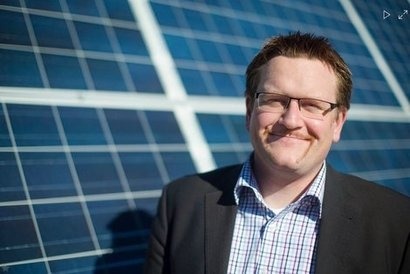
The LUT study finds that major oil-producing countries in the Middle East and North Africa (MENA) region could turn their abundant renewable energy resources into lucrative business opportunities in less than two decades. It shows that a fully renewable electricity system (100 percent RE) is roughly 50-60 percent cheaper than other emission-free energy options for the MENA region in comparison to, for example, new nuclear power, which costs around 110 euros per megawatt hour.
The results were published at the 11th International Energy Conference held in Tehran, Iran, and presented during COP22 in Marrakech to official representatives of the MENA region. The study was carried out as part of the Neo-Carbon Energy research, which is funded by the Finnish Funding Agency for Innovation, Tekes, and is carried out in cooperation with Lappeenranta University of Technology (LUT), VTT Technical Research Centre of Finland Ltd and University of Turku, Finland Futures Research Centre.
In comparison to a fossil-carbon, capture and storage option (around 120 euros per megawatt hour), fully renewable electricity is much cheaper at around 60-40 euros per megawatt hour, based on financial and technical assumptions of the year 2030.
The cost of wind and solar electricity would reduce further to 37-55 euros per megawatt hour if different energy resources were connected with a super grid that allows the transmission of high volumes of electricity across longer distances. For Iran, the price could go as low as 40-45 euros per megawatt hour. Such low cost shows that the transition of the current fossil-based electricity system towards a fully renewable electricity system can cover all electricity needs in the decades to come.
“The low cost renewable electricity system is a driver for growing standards of living, continued economic growth, in particular also for energy intensive products, and finally more peace” said Professor Christian Breyer. “The picture that emerges from that study is that the fossil fuel industry can transform its business to meet the COP21 target of a net zero emission energy system. This requires fundamental change in how we think carbon, but it could potentially open major new business opportunities”.
Transforming the electricity system fully to renewables for Iran requires 49 gigawatts of solar photovoltaics, 77 gigawatts of wind power and 21 gigawatts of hydropower. Most of the hydropower already exists, but the solar and wind capacities would require new investments. Wind power can be installed in many parts of the country and solar systems in all parts of Iran for an attractive cost. Both technologies can be easily added to the existing energy infrastructure, which is mainly based on flexible fossil natural gas fired power plants plus hydropower.
The scientists also prepared a renewable oil refining scenario in which fossil fuels are replaced by synthetically produced from carbon dioxide, water and electricity. With this so called power-to-fuel technology, 100 percent renewable system can still use carbon fuels and chemicals for aviation, materials and medicine. These are the most difficult sectors to decarbonise because batteries are too heavy for powering airplanes and carbon atom is needed in plastics and various chemicals such as solvents and medicine.
Image: Professor Christian Breyer, LUT
For additional information:
Lappeenranta University of Technology (LUT)
Tekes - Finnish Funding Agency for Innovation

